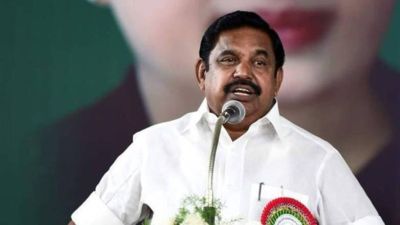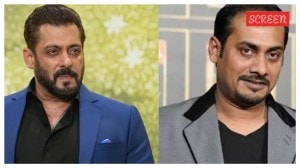Gowda mends Janata fences, dreams big
The old Janata parivar is in for a resurgence and Karnataka is setting the pace for this crucial development. Significantly, the pressure fo...

The old Janata parivar is in for a resurgence and Karnataka is setting the pace for this crucial development. Significantly, the pressure for this is coming from the bottom. In a reversal of the normal process, the leaders of various factions in the state may be left with little option but to join hands as the 2004 assembly elections approach.
Given the life-size egos of the Janata leaders, the effort to bring together the three JD factions in the state had run into rough weather. As a result, industrialist and Rajya Sabha MP Vijay Mallya, who was a prime mover in this regard, joined Subramanian Swamy’s Janata Party in disgust.
But now former Prime Minister H D Deve Gowda has put into motion a new strategy. He is trying to forge unity between the Vokkaligas, Lingayats and Korabas — the largest group amongst the OBCs — and the Muslims, whom the Janata Dal has represented traditionally. It could evolve as a formidable combination and has already led to the Congress pressing panic buttons. Deve Gowda calculates that once he has generated a momentum, the second-rung Janata leaders and the party workers would gravitate to him.
Deve Gowda has netted a big catch in Rajasekhara Murthy, BJP MP who is one of the respected Lingayat leaders with a clean image. Murthy, disillusioned with his own party, is all set to join Gowda. The two met here for three hours last week and an announcement is round the corner.
Murthy hinted at this possibility when he said, ‘‘The Congress has become corrupt. The people want the various factions of the Janata Dal to join hands. It is for the Janata Parivar to act according to the wishes of the people.’’
Siddharamaiah, who is a Koraba, is already the chief of the JD(S) in Karnataka.
Each of the senior JD leaders would like unity to take place under his stewardship. Mallya is a Hegde protege and had managed to broker peace between Hegde and his one-time enemy, Subramanian Swamy, before the former went to London for treatment. But Hegde may find it difficult to forget the way he was unceremoniously thrown out of the party when Deve Gowda took over as Prime Minister in 1996. What is going for Deve Gowda at the moment is his energy — he is vigorously touring the state — his following in the farming community, his clout with the Vokkaligas and his standing as a former PM. In contrast, Hegde, who is the informal leader of a section of the JD(U), is ailing, while S R Bommai, the chief of the third faction, the AIJD, is also keeping indifferent health. And yet these leaders know that in the past whenever they have united, the party has won or done well in the LS. This happened in the 1983 and 1994 assembly elections and in the 1991 and 1996 LS polls. That is why, despite the difficulties, the unity plans have not been abandoned. ‘‘In the meantime, I am moving from district to district, most of the workers are shifting (to JD-S) without waiting for the merger even as the talks go on. Personally, I haven’t closed the doors on unity,’’ Deve Gowda told The Indian Express. Trying to reassure the leaders in the other groups who fear that he would either impose his own son as CM or that he has promised the top job to Rajasekhara Murthy, Deve Gowda said, ‘‘I can assure you this — my son is not in the reckoning. And Murthy has himself told the press that he wants the Congress Government to go and that the leader should be elected by the legislature party. There are many senior leaders in the J D who can be CM — Sindhia, Siddharmaiah, Byre Gowda, M P Prakash, Som Shekhar, Ramesh Kumar and others.’’Many in the Congress and the BJP concede that the JD would sweep the state in the 2004 assembly elections if the factions joined hands. This has also been the message in the recent by-elections. The Congress is losing ground and the BJP is not gaining. The importance of what happens in Karnataka is not limited to winning the state. It could be the starting point of a grand strategy to capture power at the Centre which envisages the resurgence of regional forces. Deve Gowda said he was going to field 50 candidates in the L S elections and was concentrating on UP, Delhi, Uttaranchal and Maharashtra besides Karnataka. The idea is to become eligible for a national party status which means six per cent votes in at least four states. He can then lay claim to being the real JD. More important, a ‘‘loose understanding’’ is already developing among some of the leaders of the groups which formed the erstwhile JD — there are 14 of them today either in alliance with the BJP or with the Congress or are neutral — and other regional satraps. They would like to restrict the BJP and the Congress together to less than 272 seats in the 2004 LS polls. This, they feel, could ensure a Third Front-led Government backed by the Congress, a repeat of the 1996 arrangement. That means that any of the state satraps could be contenders for the top job, depending on the arithmetic. But if the Congress tally added up to more than the number represented by this group, they would then agree to a Congress-led government, provided it is not headed by Sonia Gandhi. That is the sub-text of the arrangement.
Photos



- 01
- 02
- 03
- 04
- 05



























